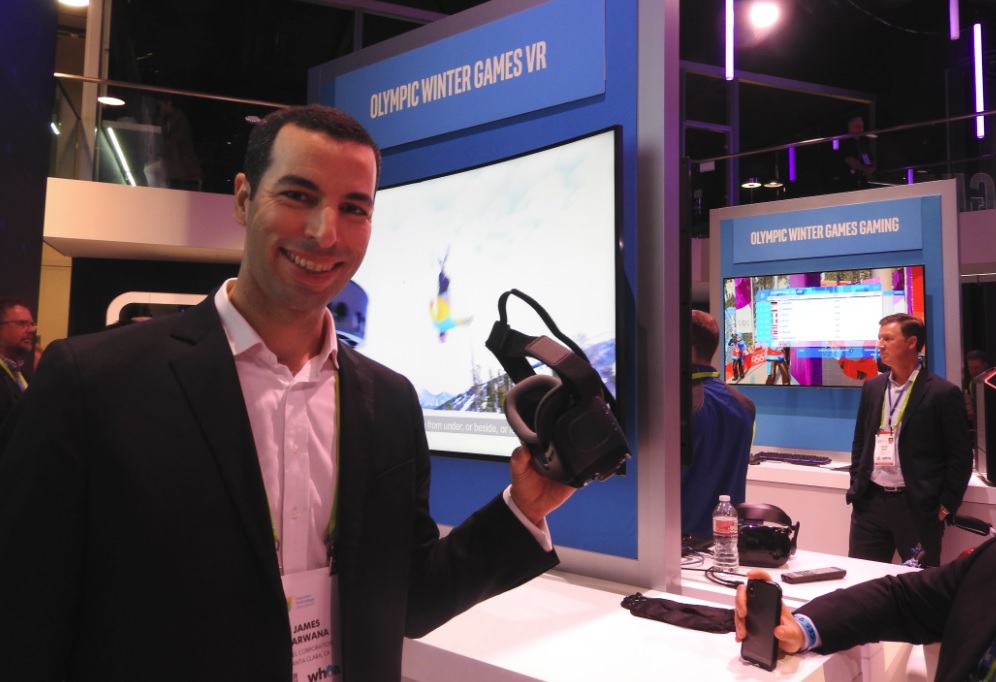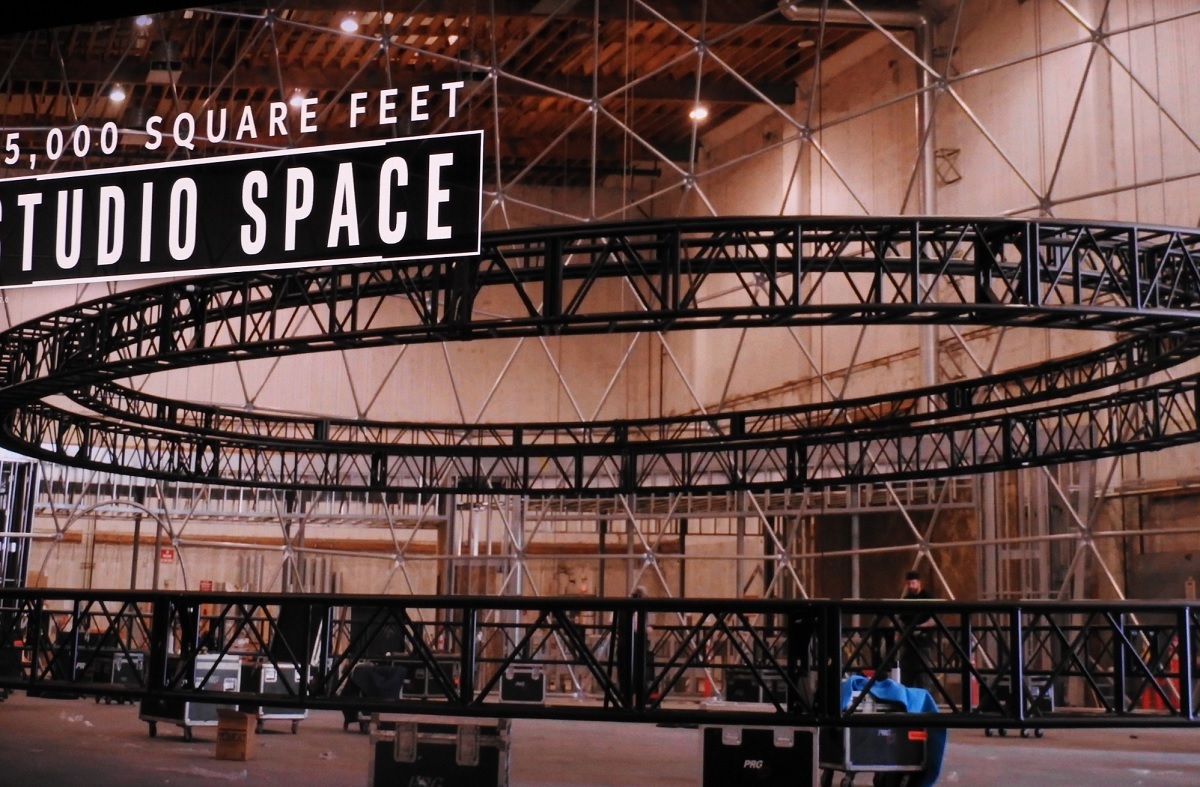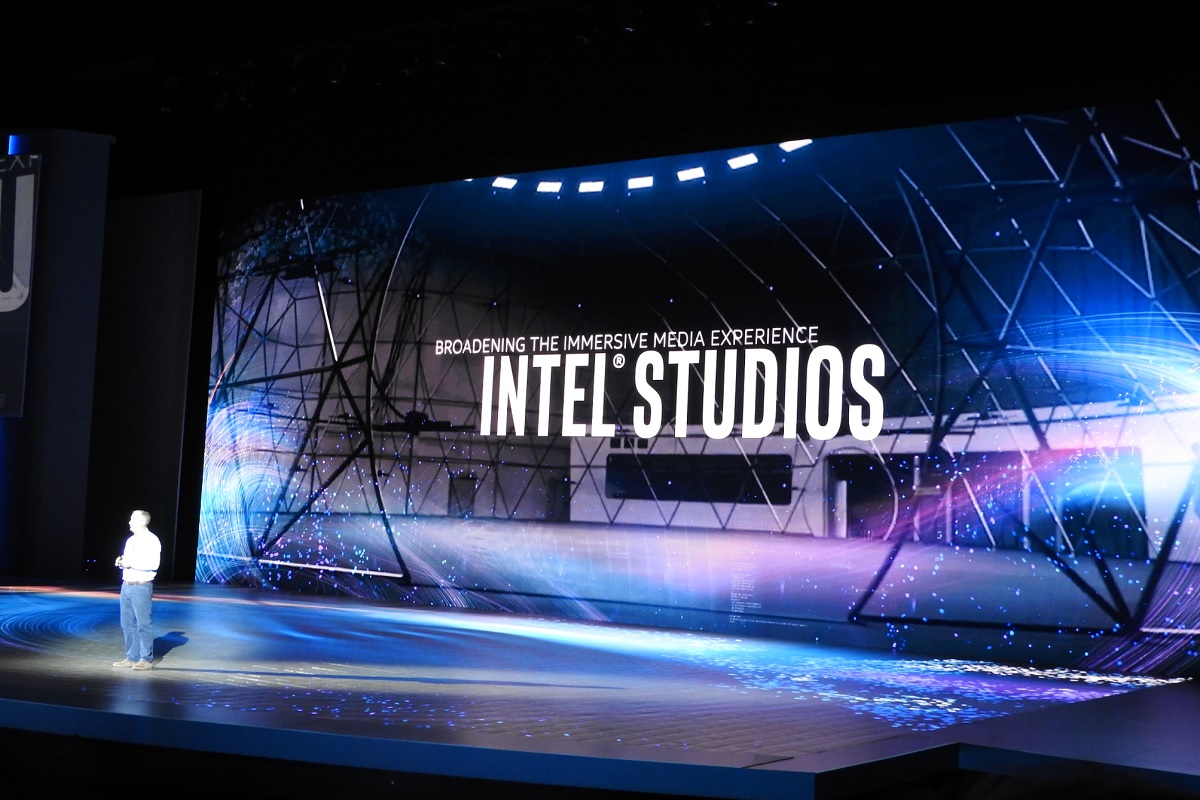Intel CEO Brian Krzanich announced this week that his company had created Intel Studios, a place where Hollywood creators could go to learn how to create immersive media, ranging from virtual reality games to non-VR sports entertainment.
He showed a video of what it the next generation of entertainment could look like. In the video, a bunch of cameras recorded a Western movie scene from a variety of angles. Intel showed the scene would have looked boring from one angle. But put together from a bunch of perspectives, the action film scene was quite breathtaking.
Intel filmed the scene as part of its promotion for Intel Studios, a collaborative lab whose purpose is to inspire future artist. The Intel Studios space has been under construction for more than a year. It has 10 petabytes of on-site storage, 10,000-square feet of volumetric capture area, 5.1 miles of fiber optic cable, and 25,000 square feet of total studio space.
I caught up with James Carwana, vice president of Intel Sports, about the new effort at the Intel booth at CES 2018 this week.
Here’s an edited transcript of our interview.

Above: James Carwana is vice president of Intel Sports.
VB: How did Intel Studios get started? How did you start thinking about how to work with Hollywood on something like this?
James Carwana: It comes back to a higher level around immersive media. Our belief is that there’s an opportunity to provide consumers with a new way to engage with content, interact with content, and ultimately have a new kind of experience. Immersive media is basically how we capture reality and experience reality.
We’re doing a lot of things here with sports. You saw in the keynote last night, capturing the volume of a stadium using our volumetric technology. You can capture the action on the field and then provide interesting perspectives – for example, a player point of view. Tony Romo was talking about that last night.
The studio is a natural extension of that. It’s taking the volumetric technology, the immersive media technology, and applying it to an industry vertical around entertainment. Again, it’s going back to that premise: capture reality and experience reality. What you saw last night was a very simple scene of 15 seconds, 20 seconds, from a western. We captured it using volumetric video, which gave our director the opportunity to fly the camera anywhere they wanted in the scene. You saw just one interaction from an interesting director’s perspective, and then from the horse’s perspective. We have one from the villain, one from the hero.
VB: Did Intel make that, or did you work with a partner to make the western?
Carwana: The western one we made ourselves. It was for us, as an example. You saw Paramount there. We’ll see how our partnership goes. We’re going to start exploring the studio together. They’re certainly going to want to bring in their own creators and creative direction. We partner with them to make sure we can capture reality in a way that supports the way they want to tell their stories.
Where it eventually goes—when you take an interactive piece of content and you flatten it to tell a story, that can be good. But great comes when you really have an opportunity to interact with the content. For example, imagine your favorite show. You can shoot a scene in a studio and then provide fans an opportunity to explore it themselves in a way that’s fully interactive and fully immersive. That’s where we think it’s going.
VB: I remember, years ago, when one of the magazines did a cover story about Andy Grove goes to Hollywood.
Carwana: Long before my time at Intel. [laughs]
VB: Tech companies have always had an interesting relationship with Hollywood. I guess the opportunity is with VR now. This is going to be a new way of making films and nobody knows how to do it yet, but you guys are familiar with the technology.
 Carwana: I’ll correct one thing on that. VR is a platform with which you can experience immersive media. It’s not the only platform for experiencing immersive media. Even flattening it for what you saw in the keynote—the opportunity is there to interact with it on a 2D monitor. A year from now we might walk into CES and find augmented reality all over the place. When you think about what type of content needs to go into AR—you need a volumetric piece of content. You need something with depth to it.
Carwana: I’ll correct one thing on that. VR is a platform with which you can experience immersive media. It’s not the only platform for experiencing immersive media. Even flattening it for what you saw in the keynote—the opportunity is there to interact with it on a 2D monitor. A year from now we might walk into CES and find augmented reality all over the place. When you think about what type of content needs to go into AR—you need a volumetric piece of content. You need something with depth to it.
So ultimately it’s capturing reality and experiencing reality. Our belief is that when you capture reality using immersive media—VR is a fantastic platform to experience immersive media. But it’s not the only platform to experience immersive media.
VB: I talked to Unity and Neil Blomkamp, the guy who directed District 9. They had this interesting thing called “Adam,” a film he made. They shot a scene in the desert and then said, “Right, now we don’t have to go back to the desert to reshoot anything.” They could just insert new characters into that part of the story. They have this whole desert environment built to go back to without sending the whole crew there again.
Carwana: It’s almost like having a floor plan. You can put the right characters in the right places.
VB: Yeah, shoot from any angle, or put characters in from a green screen, and make it feel like it’s happening in that desert. Do you guys draw a line as far as, you want to show creators how to do it, but you don’t necessarily want to make films yourselves?
 Carwana: Intel’s a horizontal company. Intel Sports is a horizontal business unit. Our job is to provide the platform and the technologies to create the experiences. When we’re creating an experience for ourselves, which is what you saw at the keynote, yeah, sure, we’ll create the experience, direct it, post-produce it, the whole nine yards. We have that capability.
Carwana: Intel’s a horizontal company. Intel Sports is a horizontal business unit. Our job is to provide the platform and the technologies to create the experiences. When we’re creating an experience for ourselves, which is what you saw at the keynote, yeah, sure, we’ll create the experience, direct it, post-produce it, the whole nine yards. We have that capability.
Ultimately, if we’re creating a piece of content for someone else, they’re going to come in with creative direction and the appropriate people that they want to create it. We’ll partner with them on the horizontal. We’ll go up as high on the vertical as that partner wants to. But our job is to enable horizontally.
VB: Sparking a bunch of fires, so to speak.
Carwana: The term, “volumetric video,” what does that mean? If you go around this conference area and pull aside 10 people to ask them that, I don’t know how many people would actually know. So we start with the industry and get to consumers. Help people understand that there are different ways to capture and experience reality. People have choice and control over what they can experience.


